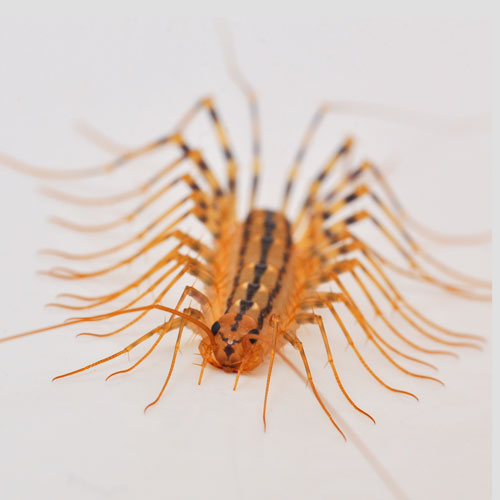Pest Description
House Centipede Habits
With thirty legs positioned very close together, house centipedes are often described as “feathery”. These arthropods run on the tips of their legs, appearing to almost float above surfaces. The male of the species often has very long antennae.
House centipedes prefer high moisture areas like mulch beds, damp basements, and behind walls in washrooms. They feed on spiders, flies, and other insects. They are considered beneficial arthropods because of the volume of nuisance insects they eat.
House Centipede Identification
House centipedes are typically 2-4”, pale white or yellow with black stripes, and have thirty legs. They don’t look like typical centipedes, and can move very quickly.
Preventing and Eliminating House Centipedes
Though these pests are beneficial, we also understand not everyone wants house centipedes hanging around! There are a number of things you can do indoors to prevent these arthropods from coming inside, including:
- Sealing entry points
- Reducing humidity in basements and washrooms
- Reducing other pests to limit food resources for house centipedes
As with other species of arthropods or insects, a professional exterminator can recommend further steps to eliminate house centipedes.









